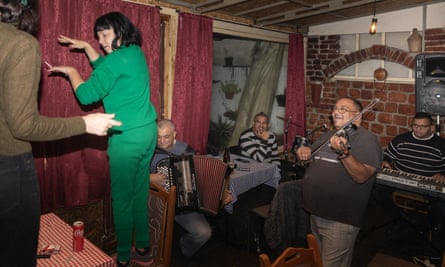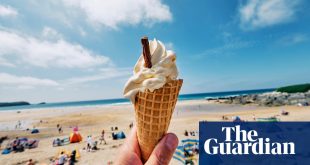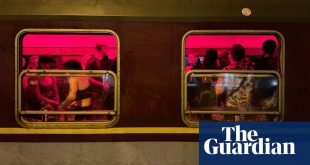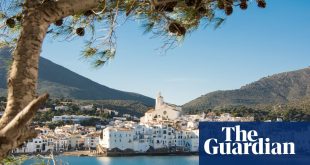I’m in a good old-fashioned pub, drinking beer over wooden tables and tucking into a hearty meal. Except the wooden tabletops are covered in red checked cloths, the decor is Balkan folk.
Instead of a roast I’m diving into a pile of minced beef sausages called ćevapi and imbibing shots of rakia, the local plum brandy. An accordion player draws musical breaths in a corner, his companion strikes Gypsy tunes from a fiddle, people dance on tables. Welcome to the kafana.
Kafanas are Serbia’s tavernas: a restaurant, pub and music venue operating from morning to late night. Regulars come for a lively breakfast before work, families throw weddings and celebrations here, business deals are cut and sorrow drowned in dark corners. They were so central to people’s daily lives that friends and the postman would come to find you at your local kafana, not your home.
Sadly, many traditional kafanas closed down in the 2000s, partly because of their reluctance to prioritise profit-making over letting regulars sit at one table all day. However, much like struggling British pubs turning to gastronomy, kafanas have adapted their offerings to survive, heralding a culinary comeback. I’m following a revamped kafana tour through the heart of Belgrade with seasoned bekrija – kafana regular – Goran Magdić from local tour operator Taste Serbia.

We begin the day with breakfast at the city’s oldest kafana Znak Pitanja meaning “the question mark”, which started life in the 16th century as an Ottoman coffee house. A cosy, wood-panelled restaurant in a low building with overhanging lintels, it sits opposite one of Belgrade’s oldest churches. The patrons got in trouble for calling it “the bar by the church,” so stuck up a “?” and never bothered to rename. Seated at low sofra tables, we are served Turkish coffee roasted on a brazier followed by a fiery shot of rakia – supposedly the key to Balkan longevity. After this come omelettes and pies laden with cheese, soft folds of bread, fried dough uštipci and smoked meats.
This kafana’s Ottoman style is just one of the many influences found in Belgrade’s varied streetscape, where east and west converge. Ornate art nouveau and neoclassical facades are offset by megalith communist-era blocks. The kafanas, too, have evolved into three distinctive styles.

Some are eastern-leaning, with hearty Balkan cuisine and raucous Gypsy trumpet bands. Others are Austro-Hungarian style, serving dishes like goulash, with stringed instruments and accordions setting the mood. More recently, nightclub-style kafanas have popped up, which amp up traditional music into turbofolk, and pull a younger crowd bent on revelry.
Turbofolk later: for now I’m exploring Skadarlija, a cobbled street that was once the city’s bohemian quarter. Here, kafanas were home to poets, artists and singers, who drew inspiration from the lively cast of characters they encountered and traded their talents for sustenance. One of the more legendary was the Dva Jelena restaurant’s singer Toma Zdravković. Grainy videos from the 1980s show him roaming from table to table wreathed in smoke and warbling to adoring patrons. Now he’s cast in bronze as a statue on Skadarlija, and people lay flowers and cigarettes at his feet.

For a hearty lunch, we head to nearby Srpska Kafana, a watering hole for the actors of the Atelje 212 theatre next door. Goran tells me that in the Yugoslav era, Srpska would get so busy that one renowned thespian Zoran Radmilović, a kind of Serbian Terry Jones, used to sit by the toilet cubicle if he found the place full – and entertain all present with his impressions of the “WC mafia” – the penny-pinching Balkan loo attendants.
after newsletter promotion
Thankful to have a table and not Radmilović’s toilet, we tuck into juicy ćevapi and grilled meats slathered in melting kajmak (a sour-cream-like spread) served by elderly waiters in timeless white shirts and black waistcoats. Serbia’s cuisine is meat-centric, but vegetarian options such as baked sauerkraut, grilled paprikas, and delicious soups are available. Dessert is a mix of Bosnian, Turkic and central European: cakes stuffed with walnuts and dripping in syrup, baked apples.

After this, I’m in need of a post-prandial stroll around the fountained Tašmajdan park. On the way there I pause outside the red-and-white checkered telephone exchange building, and realise it looks exactly like a kafana tablecloth.
As night descends, the kafana transforms once again. Lamps shine from the windows, and the music begins in earnest. At SFRJ, a Yugoslav paraphernalia-filled restaurant overlooking the Danube river, we grab beers and gaze over the city’s twinkling lights.
It’s unsettling being surrounded by the Tito bric-a-brac given Yugoslavia’s violent ending, and the brutal role Slobodan Milošević’s Serbian paramilitaries played. Serbia has never fully reckoned with this dark past, and the same sentiment that celebrates war criminals is today transformed into pro-Russian leanings in over half the population. But here a bandstand wobbles in the corner, the musicians playing Bosnian, Croatian, and Serbian folk songs on request, as well as Yugoslav hits from the 70s. The music provokes tremendous emotion among older locals: hands sway in the air and eyes begin to glisten after a few strong drinks.
The band wraps up around midnight, but I’m keen to keep the party going, so head to one of the newer kafana-inspired “turbofolk taverns” BAM club. Traditionalists are snobby about these spots, but to me they show how the kafana continues to evolve and capture the essence of Belgrade’s nightlife, which fuses hedonism and nostalgia. I descend to a packed basement where local legend Paganini is playing: a Roma musician with an electric violin. People shower the band with cash, an act of showing off, but done in the spirit of fun. The high-energy turbofolk beats have me dancing until the wee small hours. The only possible cure the next day is breakfast rakia.
Taste Serbia offers a new kafana tour, starting from €60
 Top Naija News: Nigerian News, Breaking News Nigeria and World News Top Naija News is a daily news publication in Nigeria, delivering the latest breaking news in Nigeria and around the world.
Top Naija News: Nigerian News, Breaking News Nigeria and World News Top Naija News is a daily news publication in Nigeria, delivering the latest breaking news in Nigeria and around the world.



